The word ‘Yoga’ originates from the Sanskrit root ‘yuj’, which means ‘to join’ or ‘to unite’. Yoga is not necessarily a physical discipline. It could be in the form of right knowledge, meditation, actions, devotion, meditation, or mantra chanting and is intended to bring harmony across all levels of our existence, from the body, mind, senses, soul, etc., and unite them in harmony. When the mind, body and senses are trained through meditation and other yogic practices, the fluttering of the mind dwindles. And when the fickle mind is subdued, the person attains peace of mind, and the mind is ready to seek the self. This seeking leads to self-realisation.
What are the Benefits of Yoga?
Yoga is the divine science of healthy living. The entire universal nature of all human beings, irrespective of their caste, colour, sect or religion, which is harmony, can be attained through the regular practice of yoga. The original relationship between man and nature is related to harmony and peace that can be revived through yoga.
The core aim of yoga is to unite in harmony with one’s constitutional or original nature, which is bliss or ananda. Anyone who, through yoga, realises oneness in all living beings and nature is said to be a yogi. Such a person has attained the state of mukti (liberation from agonies). He attains material and spiritual upliftment and sees everything in existence with an equal eye.
With the aim to unite the entire human race through yoga, the International Day of Yoga or Yoga Day, was announced by the United Nations on December 11, 2014. The date June 21 was recommended by the Indian Prime Minister Narendra Modi because it is the longest day of the year (in Northern Hemisphere) Modi during his speech at the UNGA, on 27 September 2014 shared his view as “ Yoga is an invaluable gift of India's ancient tradition' . It embodies unity of mind and body; thought and action; restraint and fulfillment; harmony between man and nature; a holistic approach to health and well-being. It is not about exercise but about discovering the sense of oneness with yourself, the world and nature. By changing our lifestyle and creating consciousness, it can help in well-being. Let us work towards adopting an International Yoga Day.”
After the recommendations were officially accepted, the United Nations declared June 21 as the International Day of Yoga. The very first International Day of Yoga was marked across the world on June 21, 2015. A total of 35,985 people, including a number of dignitaries from 84 nations led by Narendra Modi, performed twenty yoga postures at Rajpath in New Delhi.
Spreading Wings World Wide through Chakra Yog
Through our mission of Chakra Yog, we aim to create awareness about the lessons of the 7 chakras. Chakra Yog is based on the Principals of Advaita Vedanta advocated by Shri Adi Sankaracarya. The self is realised through Bhakti, Karm, Gyan and Dhyan, and our approach is to guide people on this path. None of the paths is mutually exclusive, and one needs to have an equal blend of all to know his true divine self. Our workshops on the Seven Chakra Sadhana, Karma, Training the Senses, You Are More, Why Am I, Meditation and Sadhana and I am a Chakra Yogi have helped thousands of people across the globe to understand life and its laws. These workshops, under the guidance of Neeta Singhal, are conducted in various cities in India and across the world and also in online webinars. They are available on our Youtube channel.
The Chakra Yog Hall in Mumbai is an awesome place to visit by spiritualists and meditators. It beautifully depicts the 7 Chakra messages with different artefacts, geometry and elements of the Panch Tatva. The classes conducted in this divine atmosphere are beamed live to a global audience.
For the last sixteen years, we have been working towards spreading the awareness of yog, meditation and spiritual items. We advocate the usage of Rudraksha , Gemstones , Yantra , Parad and other energy items to heal the mind, body and soul and live a fearless and empowered life and manifest success and abundance in the world.
International Day of Yoga 2026: Benefits of Regular Practice of Yoga
The word ‘Yoga’ originates from the Sanskrit root ‘yuj’, which means ‘to join’ or ‘to unite’. ‘Yoga’ means to join the mind and the body by creating harmony between them. When the mind and the body are harmonised through meditation, and other yogic exercises and the fluttering of the mind dwindles. And when the fickle mind is subdued, the person attains peace of mind. It is the art of healthy living. The entire universal nature of all human beings, irrespective of their caste, colour, sect or religion, which is harmony, can be attained through the regular practice of yoga. The original relationship between man and nature is related to harmony and peace that can be revived through yoga.
The core aim of yoga is to unite in harmony with one’s constitutional or original nature, which is bliss or ananda. Anyone who, through yoga, realises oneness in all living beings and nature is said to be a yogi. Such a person has attained the state of mukti (liberation from agonies). He attains material and spiritual upliftment and sees everything in existence with an equal eye.
With the aim to unite the entire human race through yoga, the International Day of Yoga, aka Yoga Day, was announced by the United Nations on December 11, 2014. The date June 21 was recommended by the Indian Prime Minister Narendra Modi because it is the longest day of the year (in Northern Hemisphere) Modi during his speech at the UNGA, on 27 September 2014 shared his view as follows.
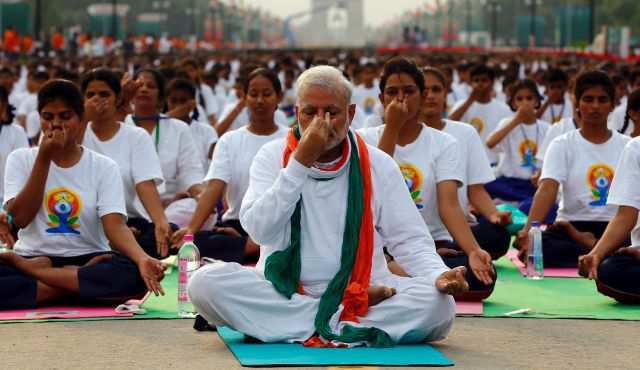
Yoga is an invaluable gift of India's ancient tradition. It embodies unity of mind and body; thought and action; restraint and fulfillment; harmony between man and nature; a holistic approach to health and well-being. It is not about exercise but about discovering the sense of oneness with yourself, the world and nature. By changing our lifestyle and creating consciousness, it can help in well-being. Let us work towards adopting an International Yoga Day.
After the recommendations were officially accepted, the United Nations declared June 21 as the International Day of Yoga. The very first International Day of Yoga was marked across the world on June 21, 2015. A total of 35,985 people, including a number of dignitaries from 84 nations led by Narendra Modi, performed twenty yoga postures at Rajpath in New Delhi. `
Yoga or Meditation?
Both are the branches of the same tree or two sides of the same coin. Meditation involves an absolute focus on calming down the intense functioning of the mind, whereas yoga involves meditation, breathing and physical bending (exercises) of the body. It is one of the best ways to still your mind and increase spirituality. The strains and stress of modern life are reason enough for anyone to feel a need to be spiritual. The busier you get, and the less time you have to spare, the more you need to practice stilling your mind. This is because the pressures you are facing and the responsibilities you carry out bring fresh challenges in your life. And meditation will not only release you from tension and strain, but it will also refresh your mind and improve your ability to face whatever life throws at you. There are various types of mediation that you can choose from. Following are some of the known methods.
- Sound Meditation: It is a mantra-based meditation where the sound of the mantra helps you go into deeper stages of awareness by releasing you from the clutches of your brain. There are several mantras offered by Vedic texts, and the most popular is the OM mantra . By reciting the OM mantra, one can focus on the sound of OM and feel the mind sliding into a complete state of calmness.
- Zen Mediation: A gift from Buddhism, it is based on philosophy rather than religion. The practitioner gains awareness through observing the breath and the mind and communication with the teacher. Zen meditation stresses the achievement of enlightenment and the individual expression of spiritual vision in Buddhist teachings. The Zen sutras (scriptures) are taught through communication with a proficient teacher.
- Transcendental Meditation (TM): This technique uses a mantra or Sanskrit words to help focus instead just following the breath. The guru (teacher) gives the mantra to the students depending on their age, gender and mental makeup. This meditation was founded, practiced and given by Maharishi Mahesh Yogi.
- Reflective Meditation: This analytical meditation is focused on logical thinking to meditate on an object, a question, a wish or anything that impacts you emotionally. While doing this meditation, the practitioner can ask: Who am I? What is the actual purpose of my life? Why am I suffering from this? Why can I not do this? What is my role in this universe? One must sit in a relaxed pose and effortlessly reflect on the object or the above questions. At first, your mind may not be able to focus because of its flitting nature, but gradually it becomes used to this technique. The meditator easily finds cues to solve the problems. Studies show that self-reflection practised in an undisturbed place can help minimise angst, stress and depression, while enhancing optimism, creativity, and liveliness.
- Mindfulness-based Stress Reduction Started by Jon Kabat-Zinn in 1979, this technique uses breath awareness and body scan. Breath awareness is as simple as it sounds. You focus your attention on inhalation and exhalation. A body scan is a process of focused attention on the physical body, starting at the toes and working your way up with heightened awareness with the potential for release or relaxation of tension. The practitioner may be seated, lying down, or walking, depending on the focus of practice. This popular technique is taught worldwide to healthcare professionals to create a partnership between the patient and the medical team.
- Kundalini Yoga: The Kundalini Yoga tradition prescribes specific and practical tools that carefully support the mind and guide the body through the use of breath, mantra, mudra (hand positions), and focus geared towards the awakening of the Kundalini. The range and variety of meditation techniques in the Kundalini Yoga tradition are very large and includes haṭha yoga techniques (such as bandha, pranayama, asana), Patanjali’s Kriya yoga (consisting of self-discipline, self-study, and devotion to God), tantric visualisation and techniques of laya yoga.
Scriptural Viewpoint of Yoga
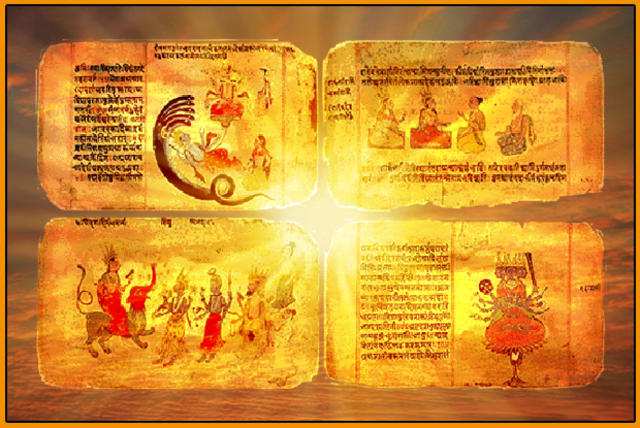
Four Paths of Yoga
It is essential to know about the four paths of yoga. There are different approaches to life that ultimately aim to connect an individual to self and, eventually, universal harmony. The four paths target the four realities of life: body, mind, sense and soul and use a different technique to create Yoga (union).
Bhakti Yoga
If you use your emotions to reach the Supreme Purusha, it is called Bhakti Yoga. This path is for those who have an emotional nature and views God as a personification of love. Meera, Surdaas and Chaitanya Mahaprabhu used Bhakti Yoga to unite with God.
Gyaan Yoga
Reaching the ultimate through intelligence is known as Jnana Yoga. This path is taken by those with immense willpower and strength. Jnana Yoga can be performed only after shedding ignorance and achieving selflessness.
Karma Yoga
Using body or physical actions to know the Self and serve others is called Karma Yoga. Mother Teresa, Mahatma Gandhi and those who gave life in the duty of others achieve Moksha through Karma Yoga.
Dhyana Yoga
Transforming energy to reach emotional and mental stability is called Dhyana Yoga. It aims to transform physical and emotional energy into spiritual energy. The key to this path is meditation. Kriya yoga, Kundalini Yoga and Pranayama are branches of Dhyana Yoga.
Importance of Yoga
The importance of regularly doing yoga is nicely described in the Bhagavad Gita (6.16-17)
नात्यश्नतस्तु योगोस्ति न चैकान्तमनश्नतः।
न चाति स्वप्नशीलस्य जाग्रतो नैव चार्जुन।
“There is no possibility of one’s becoming a yogī, O Arjuna, if one eats too much or eats too little, sleeps too much or does not sleep enough.” (6.16)
युक्ताहार विहारस्य युक्ता चेष्टस्य कर्मसु।
युक्ता स्वप्नावबोधस्य योगो भवति दुःखहा।
He who is regulated in his habits of eating, sleeping, recreation and work can mitigate all material pains by practising the yoga system. (6.17)
These two verses of Chapter Six underline the significance of regularly performing Yoga early in the morning. The first verse talks about keeping in one’s balance in one’s diet and rest. The next verse talks about control maintained in eating, sleeping, recreation and work. One MUST NOT overdo in these areas. One must practice yoga to regulate everything. Following are the general benefits of practising yoga regularly.
Shiva, Yoga, Spirituality and Rudraksha beads
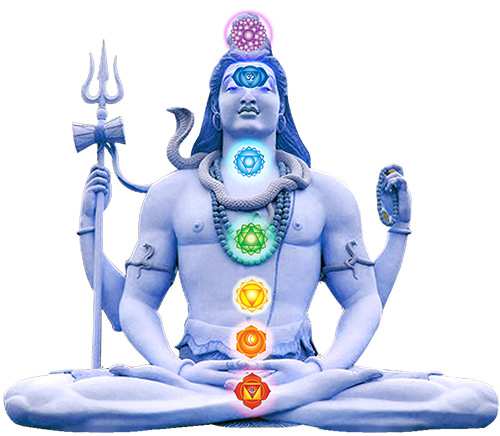
When it comes to yogic scriptures, Lord Shiva takes the center stage. He is described in the various scriptures as Adi-Yogi (‘Adi’ meaning ancient, old or first). He was the first Yogi to realize and practice the science of Yoga in the Himalayas for ages. After mastering the science, He fell into an endless sea of joy and shared it with Shakti, His divine consort, informing Her about the powers of Yoga. He then shared the yogic secrets with the Great Seven Sages, known as Saptarshis, who became His disciples.
An interesting point to be noted here is that Lord Shiva had Rudraksha beads all over His body while practising Yoga. Those beads created a purifying atmosphere for Yoga. Lord Shiva says in the Shiva Purana.
ध्यान धरन हीनोअपि रुद्राक्षम धराय बुद्धा
सर्वपाप विनिर्मुक्तो सा याति परमं गतिम्
“A man with meditation and perseverance and a wise man, who wears Rudraksha gets rid of all the sins and attains the supreme goal of the human life.”
A meditational state and perseverance can be attained through yoga practice. And when one wears Rudraksha beads while doing yogic exercises, the spiritual and bodily upliftment is quick. Lord Shiva, by His exemplary yoga practice, teaches us the art of controlling one’s own mind and self. When it is done, external factors cannot shake or topple one’s emotional and intellectual well-being. Lord Shiva represents calmness, serenity and auspiciousness. All of His qualities are the results of His meditation and Yoga.
Yoga is not religious, however, a person who practices yoga in its true sense discovers their inner consciousness and thereby finds light and one’s Lord. So, on this world yoga day, try to find inner peace by dispelling all negativities and darkness from within. So gear up on this International yoga day with the necessary yoga accessories and embark upon a journey of good health and inner peace.


-in-Astrology.jpg)
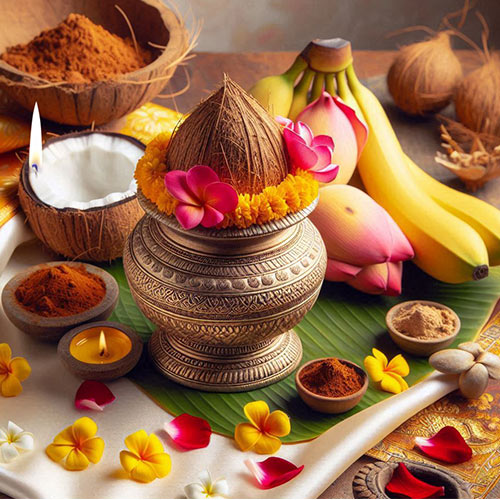
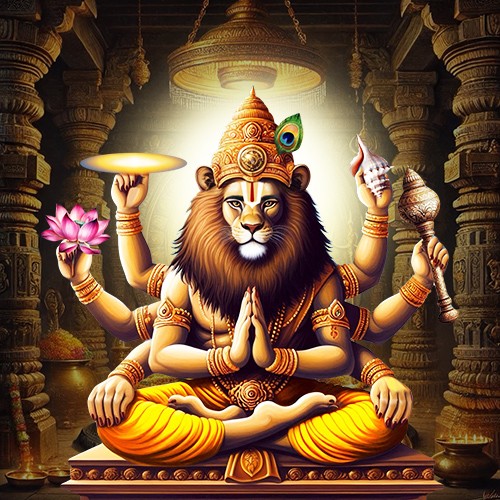
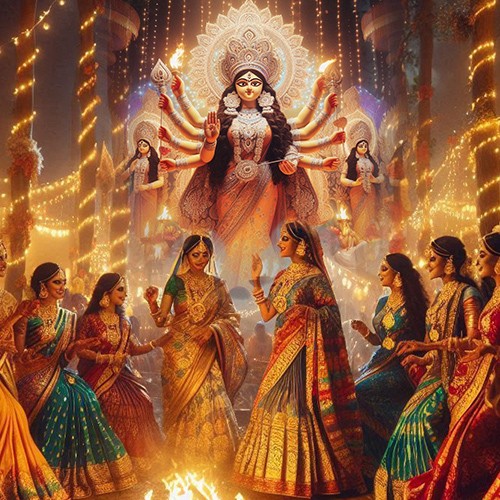
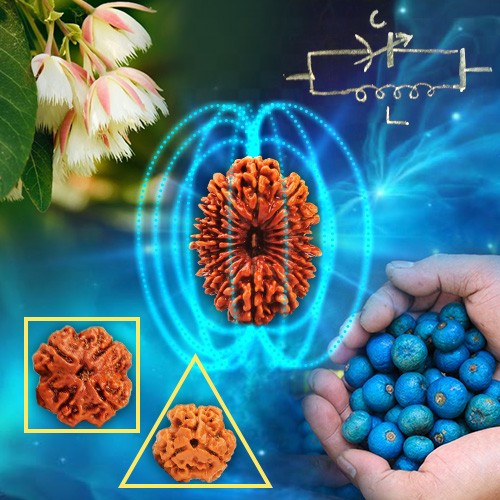


.jpg)


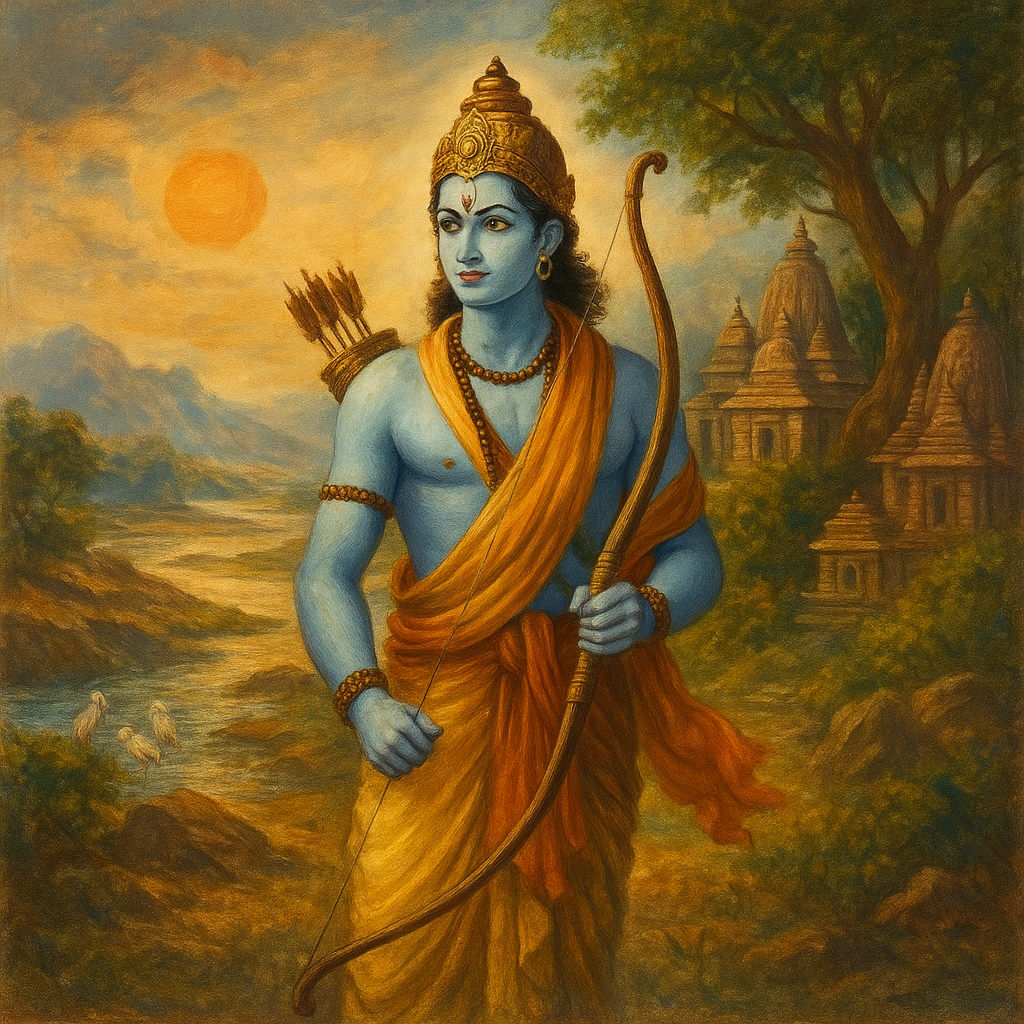
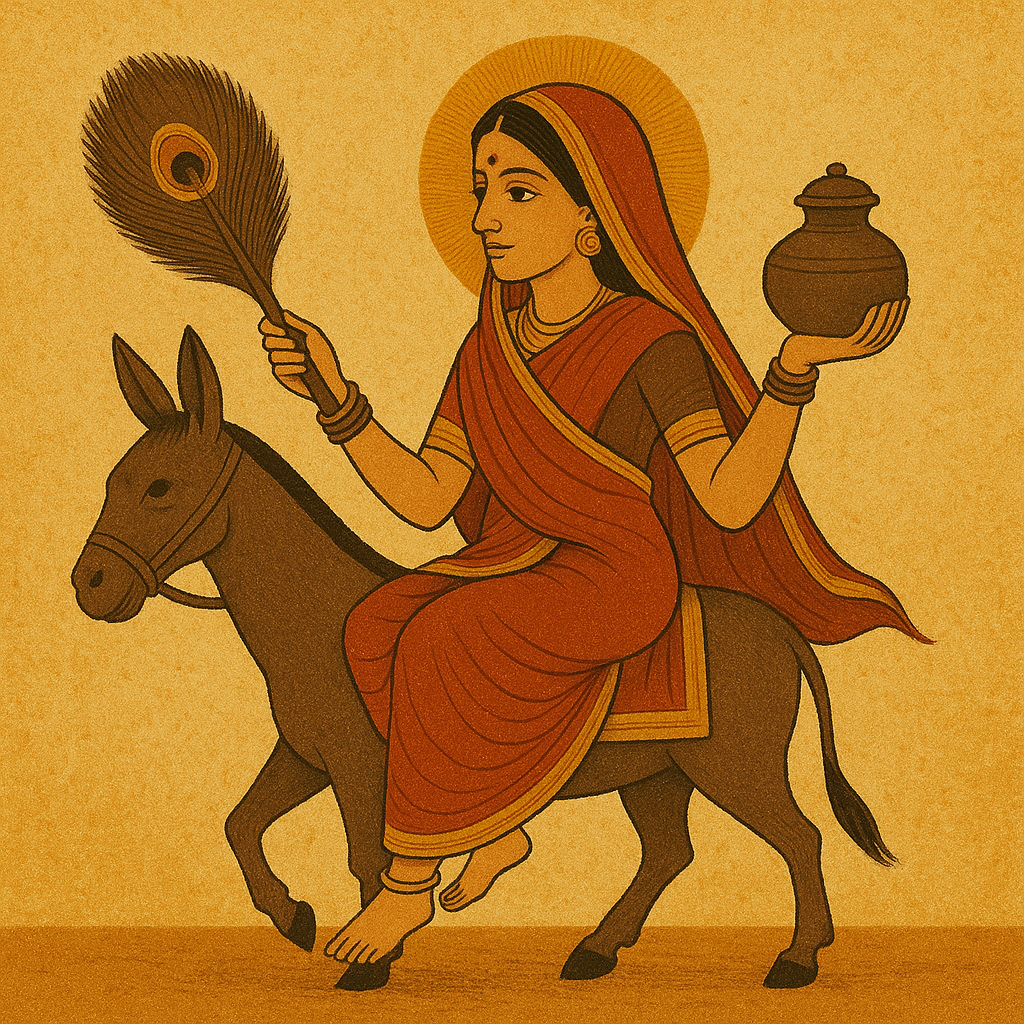
Comments 0
Leave your thought here